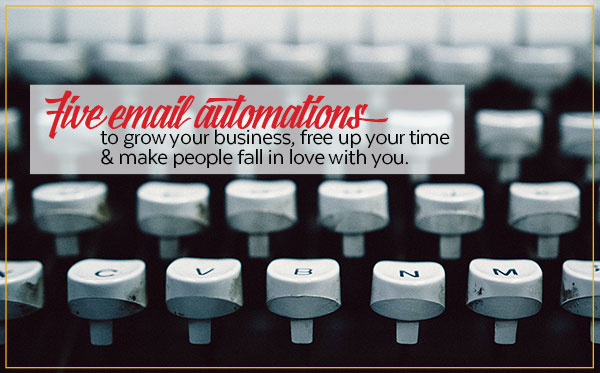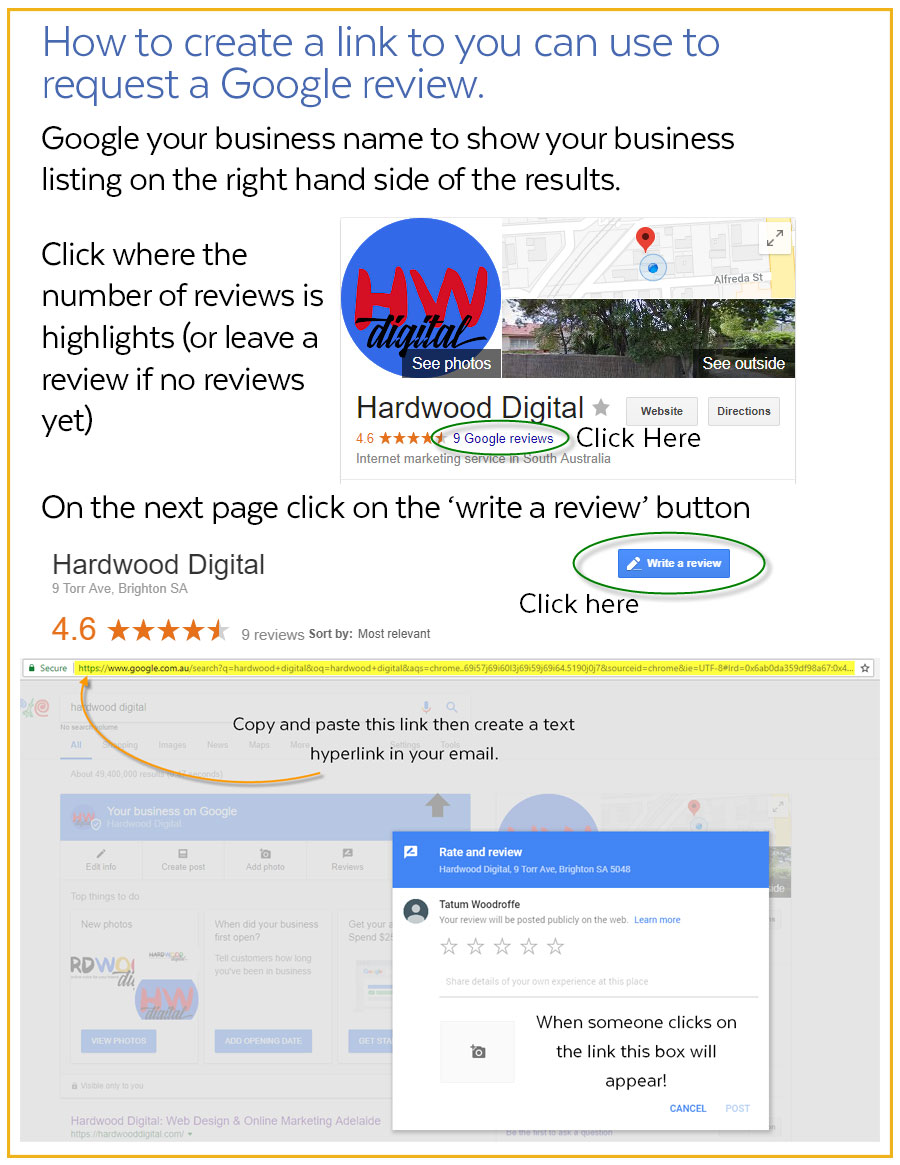Five email automation ideas to grow your business, free up your time and make people fall in love with you.
Email automation sequences, they’re probably the most powerful thing you’ve never done in your business. Despite your resistance and feeling that no one reads email anymore, which is dead wrong, implementing the five email automations outlined here has the potential to make a big difference to your business.
Not just in dollars either, some of them are simply common sense because they’ll save you time off your to-do list.
Let’s dig in.
Email Automation One: The new subscriber series
Welcome sequences are often one of three things:
- More about the business than the subscriber and their desire to sell you something isn’t even thinly veiled.
- Boring,
- Non-existent.
Often 1 and 2 arrive in your inbox together. Not a good look.
What should a new subscriber email series look like then?
My number one tip is to be yourself, write like you talk in real life. Except be more concise if (like me) you have a tendency to ramble. Be human.
One person who does a great job of writing his emails in a very human way is David Siteman Garland. Check out his style by getting on his list here (as a bonus you’ll also get a copy of his newly released, free eBook)
A new subscriber series is your opportunity to introduce yourself and ask your new friend to introduce themselves.
By saying introduce yourself I don’t mean giving a run-down of your CV. Sure, a brief statement about what you do is great but people you meet care more about how you like your coffee and which footy team you barrack for than how many years you spent in the education system.
Use your email welcome sequence to nudge people towards buying from you or using your services rather than explicitly asking them to buy from you. If someone was interested enough in what you’ve got to offer that they actually opted in for more info chances are they already know that you can help them solve whatever problem they’ve got going on.
The welcome sequence is about building rapport. It’s your very short window of time where you can build the know-like-trust factor with your new friend, in a way that makes them actually want to read what you’ve got to say each time a new message from you hits their inbox.
Use stories to get you there.
You can read more about how to write your own email subscriber welcome series here.
Email Automation Two: The Soap Opera Sequence (SOS)
This email automation is really just an extension of your welcome sequence.
I’m taking the term Soap Opera Sequence from Andre Chaperon, but you’ll find it used elsewhere too. In a nutshell your SOS is an extension of your basic welcome automation where you continue to build rapport and educate your new email friends. If you’re going to go down this pathway then you REALLY need to remember that this is all about providing value.
Remember that new subscribers likely haven’t had the opportunity to read everything on your website. A SOS is a great opportunity to direct them to different pages and posts on your website. Use your emails to provide context with additional storytelling.
A well-constructed email sequence helps you to show that you understand the problem and are the right person to provide a solution.
An SOS can go on for as long as you’d like it to and you get extra points for adding new automations off the back of actions people can take in individual emails in the sequence.
To get you started go back and review the email campaigns you’ve sent out in the past. Find the emails that have performed better than others or you thought were particularly well written and use them as a starting point for your SOS.
Intrigue is essential in your SOS, this is how you’ll encourage people to open the next email, and the next, and the next…
Email Automation Three: Notify Me
This tricky little email automation isn’t an email you’ll be sending to your subscriber, it’s one that you send yourself.
ActiveCampaign allows you to put a little piece of code on your website that will track and record page visits for each of your contacts.
On your website, there are probably a few pages that indicate people are close to investing in your service.
In the case of Hardwood Digital…if someone in our database happens to visit our web design services page this might be an indicator that they’re thinking about upgrading their website.
In this case, the ‘notify me’ email would send me an email to me saying that Mary Smith had just visited the web design services page. This is my cue to send Mary a helpful, relevant, personal email.
Feeling a bit creeped out by this?
Me too…a little.
However, done well, it’s just good business sense.
Because I’m a stickler for the rules Mary would have opted in for my list herself.
The privacy policy on my website let people know that we use cookies and tracking code.
The follow up email I’ll send is helpful not a sales pitch.
Compare this with a cold call.
Not so creepy after all!
You’re sending a helpful email to someone who’s already connected with your business and is actively shown an interest in your services.
Email Automation Four: Action Taken Follow Up
Still not convinced that the notify me automation is for you, that’s fine. Adding an action taken follow up email sequence might be a better fit.
An action taken follow up automation is triggered when a person in your database takes a specific action. An action might be visiting a specific page on your website or clicking a link in an email, for example.
The purpose of the follow-up automation in this context is progress a subscriber closer towards making a purchase or engaging your services.
A simple example would be an abandoned cart follow up automation triggered when someone in your database has been to the checkout page but has not completed the purchase within a specific time period.
Going back to my example for the ‘notify me’ email, if I didn’t want to send a personalised email I could set an automation trigger with a sequence of emails walking the subscriber through information about web design & development.
If you’re setting up an automation triggered by a specific action it’s important to add logic that will prevent a subscriber (with a single email address) from receiving the same series multiple times.
Developing an action triggered email automation for each of your services will result in a much higher lead conversion rate. They help you hit the sweet spot of sending the right information to the right people at the right time.
Email Automation Five: Referral and Review Requests
Regardless of whether you are a product or service based business referrals and reviews are infinitely valuable. Making the requests part of your process, better yet, automating them is smart.
The best time to ask for a referral is shortly after you start working with a new client or they’ve made a purchase for the first time. Be creative in how you ask and make sure you tailor it so that you’re empowering them to refer an ideal client or customer.
Ideally, you should be asking for reviews within a short period of time following service or product delivery. Make it easy for your client by giving them a link to where you’d like them to leave you a review. Alternate between Google, Facebook and other relevant industry review sites.
Dependant on your industry you may also like to ask select clients to write you a testimonial to be used on your website. In this situation, it’s worthwhile providing a bit of guidance on where on your website it will be featured.
Not sure about how to go about actually implementing your email automation?
ActiveCampaign is the tech we use and recommend.
Hit us up if you need a hand with the implementation, this is something we can do for you.
How about the actual email writing? Ideally, that’s something you should do yourself. Honestly, there is no right way to be yourself and the best way to get better at connecting with people using written words is to just do it.
Think back to the bit at the beginning of this blog post where I said to write like you talk. Don’t be afraid to actually do the talking and turn it into writing. I often record myself then use a transcription service to turn it into written words then edit it down. Time efficient little process flow right there.
Time for you to get on with it.



